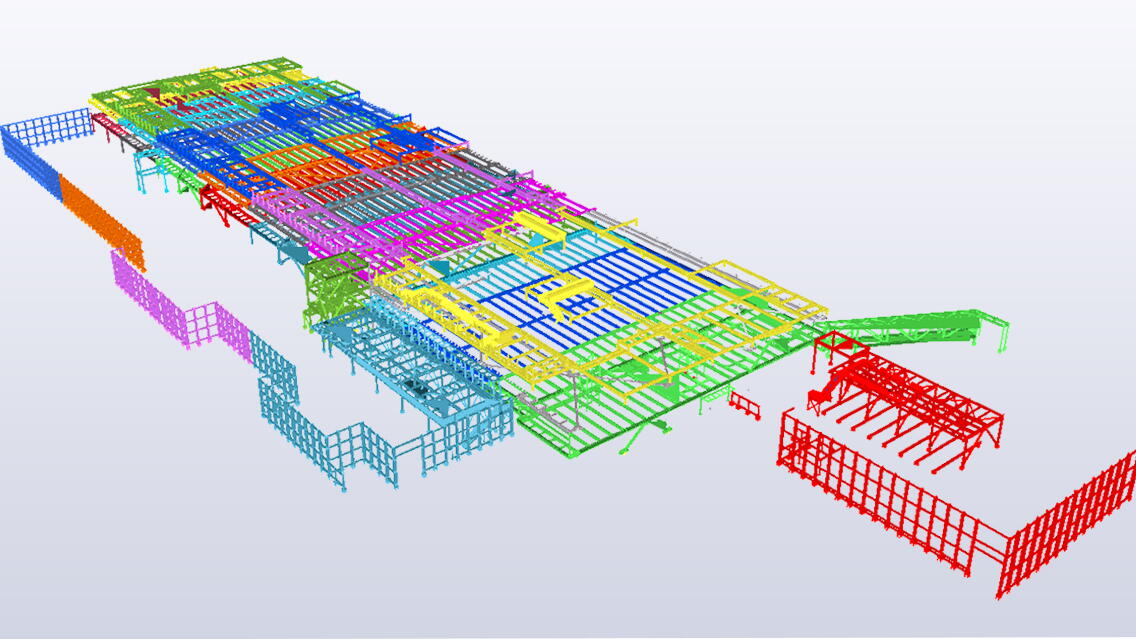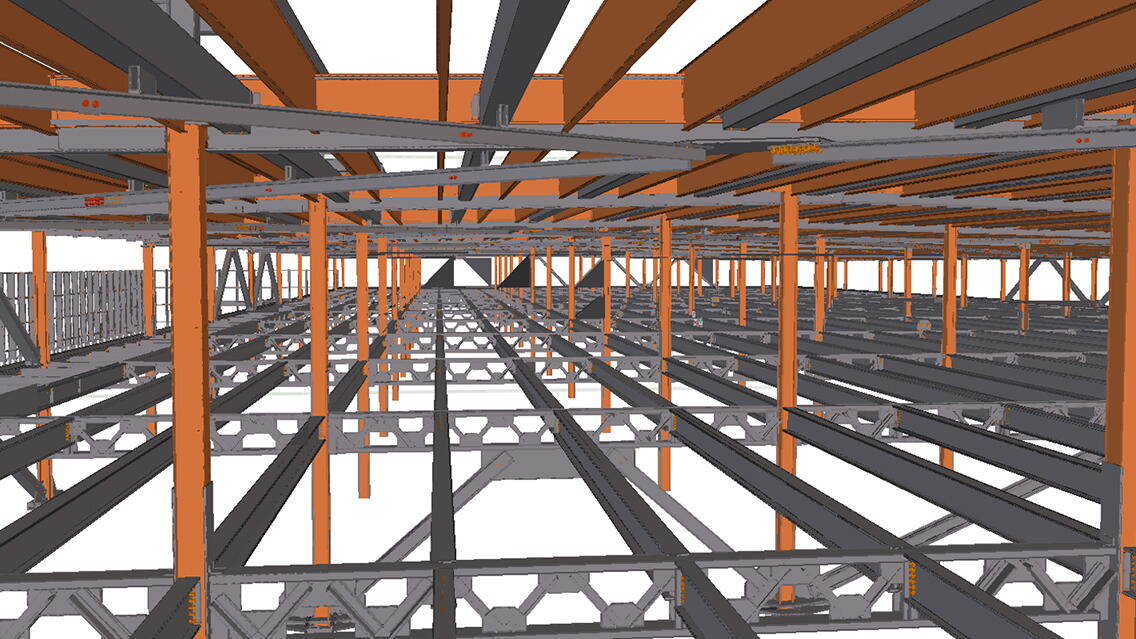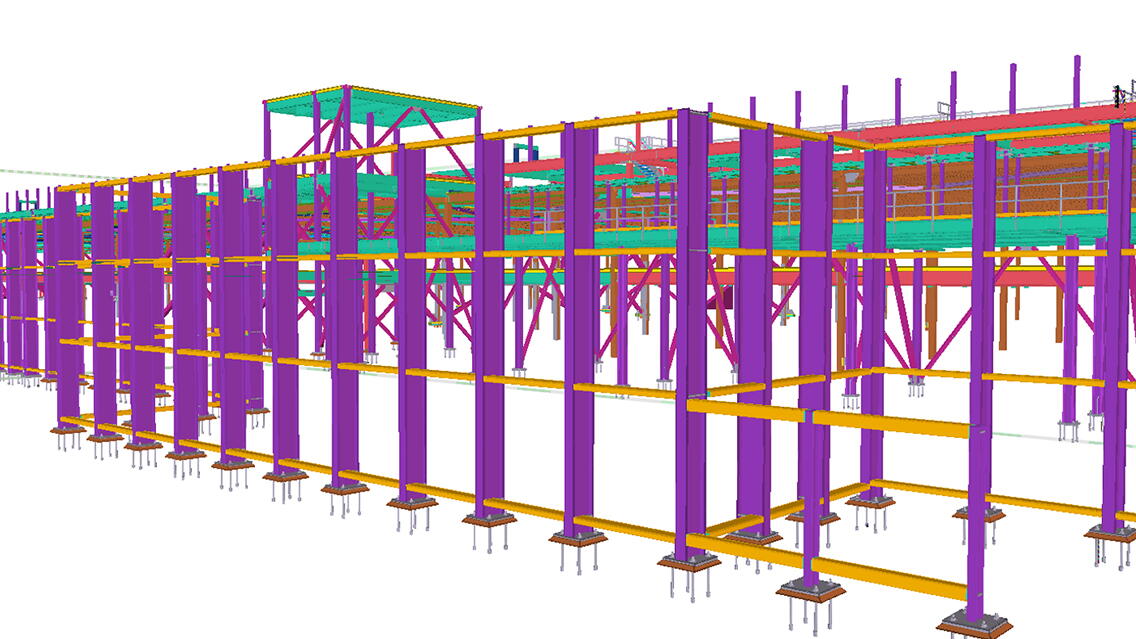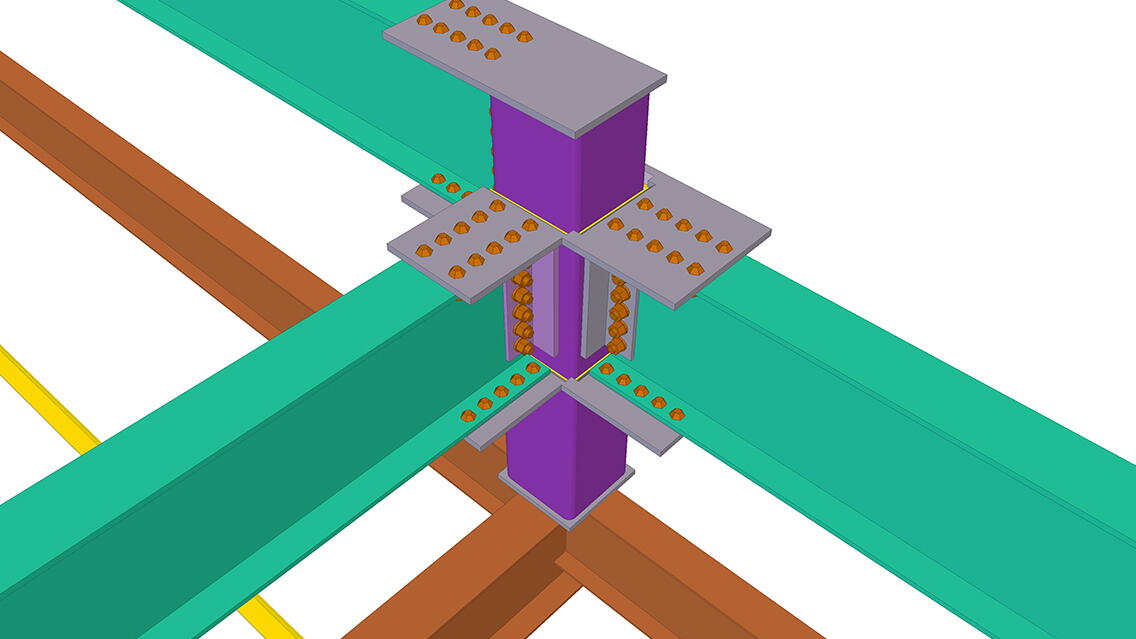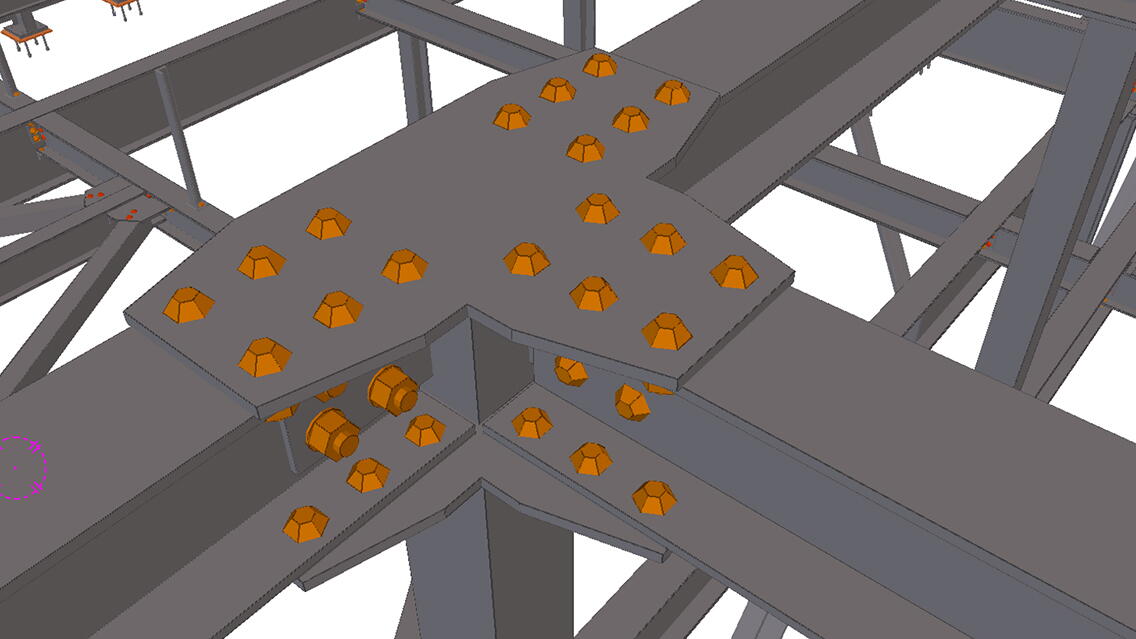Sanria was tasked to undertake the detailing of Secaucus campus of Equinix. The project weighed 5124 tonnes and comprised of 31 sequences. The scope of work of the project included the engineering and detailing outputs for steel fabrication and erection of the structure. The steel is under fabrication and Sanria Engineering is helping with solutions related to the fabrication and shop requirements.
Challenges
The project team faced numerous hurdles while delivering the project as mentioned below:
- Modelling and detailing of built-up trusses
- Sloped horizontal brace connections
- Detailing of donut plates according to the existing base plate elevation
- Coordination with joist, precast walls & elevators
- Coordination with existing field survey measurements and modification of the roof slopes accordingly
- Further, arriving at the connection to match the field conditions, column locations, and base plate elevations were equally challenging for the team
Benefits of using Tekla
Sanria Engineering has been using Tekla for most of their complex projects. The software helped them to overcome complex challenges and achieve outstanding results. This project was successfully delivered in 3 stages i.e., approval, resubmittal for approval and fabrication.
Quality and efficiency: Tekla was used to convert and connect the structural and architect's IFC files received from the customer thus saving considerable time. Further, cloning of trusses improved efficiency. Architectural and structural IFCs helped in building the model quickly.
Automation: Auto-connection applicator was used to automate the connections. Components were created related to safety hole, column reinforcement plate, a channel with stiffener, screen wall connection, and flange extension with WT. A feature extension was also created to modify the NC output according to the customer's requirements.
Object representation feature: The project team had to keep track of multiple things and finally deliver a quality output. The team used the object representation filter of Tekla Structures to identify and eliminate mistakes. Filters were created for easy tracking through colour identification and for identifying cambered members. ABM was given for both heaps and partial shipments, which the team could track, execute, and provide quality output.

